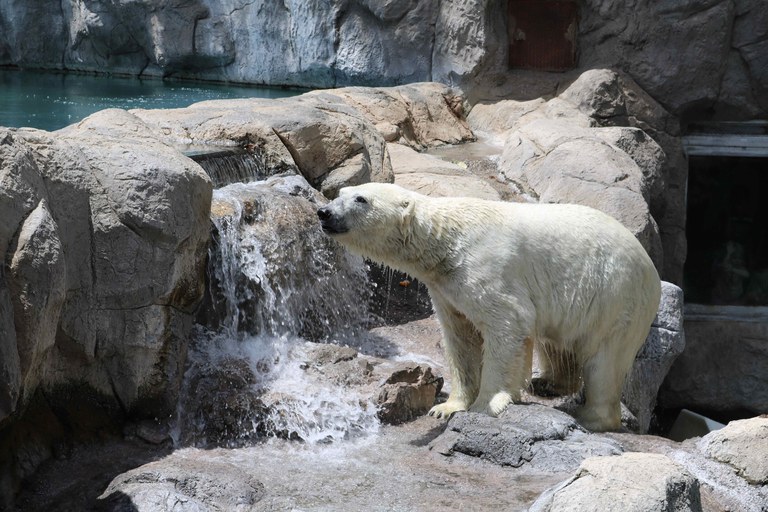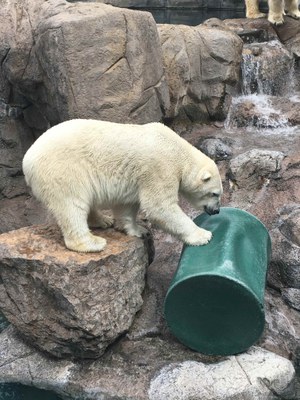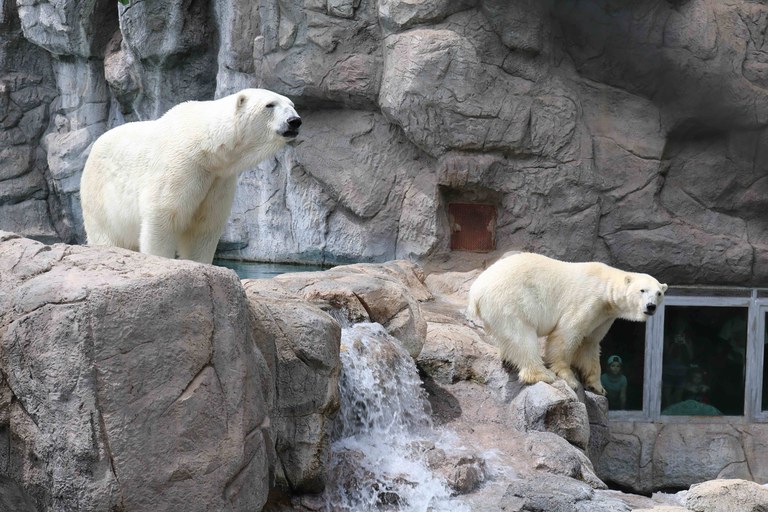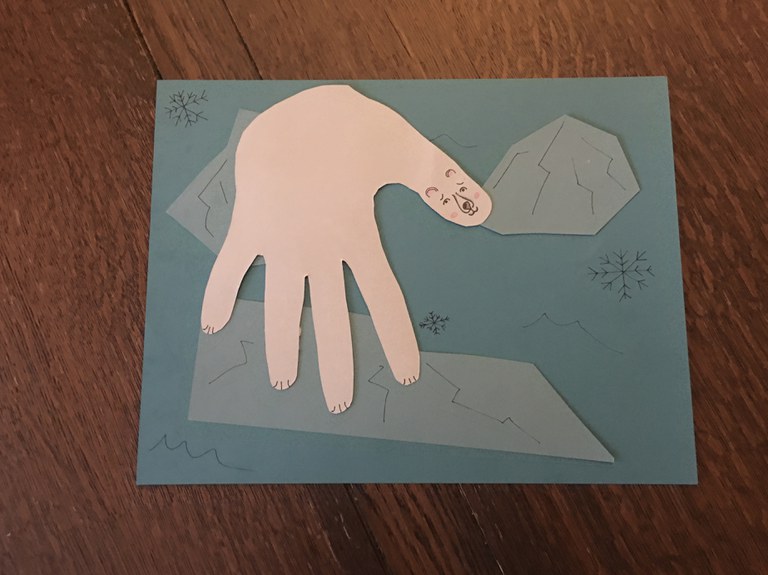Polar Bears
Goal
Learn about polar bears in their natural habitat and those that live at the BioPark. Discover the challenges polar bears are facing in the wild and how you can help.
Introduction to Animal

Brrrrrr, it’s cold. Today we will be exploring the frozen tundra at the North Pole and some of the animals that live in it. What is a tundra? What makes it different from other habitats? A tundra is a vast, flat, treeless Arctic region of Europe, Asia or North America where the subsoil is permanently frozen. How is that different from New Mexico? Can you make a list of how they are alike and how they are different?
Temperatures in the Arctic are steadily increasing and the loss of sea ice is affecting polar bears’ ability to hunt, travel, rest, and find a mate. Furthermore, polar bears have long generation time and a low reproductive rate. This limits their ability to adjust to a warming world making them highly susceptible to warming climates.
Special adaptations that help polar bears survive in the harsh landscape include having two coats of fur and a thick layer of fat that they use as insulation to keep themselves warm.
What would be on a polar bear’s menu? They are carnivores, eating meat. And they are going to need a large source of food to help build all that insulation. A polar bear’s diet mostly consists of seals. In order to reach their prey they must venture to the very edge of sea ice platforms. Polar bears are strong swimmers and divers, which is a characteristic that allows them to swim through the currents of the cold water from one ice platform to the next. Good thing they are semi-aquatic mammals, doing well on both land and water. The size of a polar bear's range depends on two main factors: the quality of the sea ice and the availability of seals for prey.
How the BioPark works with Polar Bears

The ABQ BioPark is located in the high desert. The polar bears living at the BioPark still have their adaptations for surviving in cold climates. In order to make them more at home, the BioPark designed their habitat with lots of “cool” ideas. Here at your BioPark we have two great tundra animal ambassadors, twin brothers Kiska and Koluk. Kiska and Koluk’s exhibit is suited with an air-conditioned ice cave, waters kept cold with large chillers, a 20-foot water slide, waterfalls and a 14 foot-deep pool. These features mimic the polar bear’s habitat in the wild and keep them active.
Kiska and Koluk are provided with plenty of enrichment that stimulates cognitive and physical activity.
The Albuquerque BioPark participates in the International Polar Bear Day every February. Join us to learn more!
Resources
- Are you a teacher? Learn how you can get involved.
- Zoos and Aquariums around the world are making the strong stepping stones into a bright future, please visit this site.
Activity Description: Iceberg Hop (Pre K - 3rd)

Imagine you are a giant polar bear moving from one iceberg to another. Remember polar bears are excellent swimmers, so if you happen to fall off an iceberg just plug your nose and swim to the next platform! Make modifications for warming climates and changing food supplies
Materials:
- Several sheets of white paper/cardstock
- Scissors
Activity Method:
- Cut shapes of “icebergs” from cardstock and lay them on the floor
- After placing your “icebergs” around, instruct students to maneuver their way between icebergs, all the while pretending they are a polar bear.
- Were the icebergs close enough to hop from one to another?
- Did they have to swim?
- Did they encounter any other animals along the way?
- Feel free to explore and create your own “iceberg” experiments!
- Temperatures in the Arctic are steadily increasing and the loss of sea ice is affecting polar bears’ ability to hunt, travel, rest and find a mate. Use fewer “icebergs” or place the “icebergs” further apart. Have a discussion about warmer climates in the tundra and what that might mean to polar bears.
- Food sources are moving based on water temperatures. Place small fish and seals in the water in between the icebergs. Were the students able to reach the food? What happens if the food moves further away? How far did the polar bears have to swim?
Activity Description: Polar Bear Handprint Craft (K-5th)

Materials:
- Dark blue cardstock
- Light blue cardstock
- White cardstock
- Black marker
- Glue stick and/or tape
- Scissors
Activity Method:
- Trace your child’s hand on a piece of white paper with the black marker.
- Cut out the handprint.
- Draw your polar bear’s face on the thumb of the handprint.
- Using the light blue cardstock, cut out iceberg shapes then glue the icebergs on the darker blue cardstock.
- Place glue along the back of the polar bear handprint and glue it onto the largest iceberg. Use your imagination and add to your polar bear habitat!
Additional Resources
- Enjoyed this lesson plan, and what to continue to learn more about Polar Bears? Virtually explore the San Diego Zoo Polar Bear exhibit!
- Interested in more climate change activities? Check out Climate Kids at Nasa.
